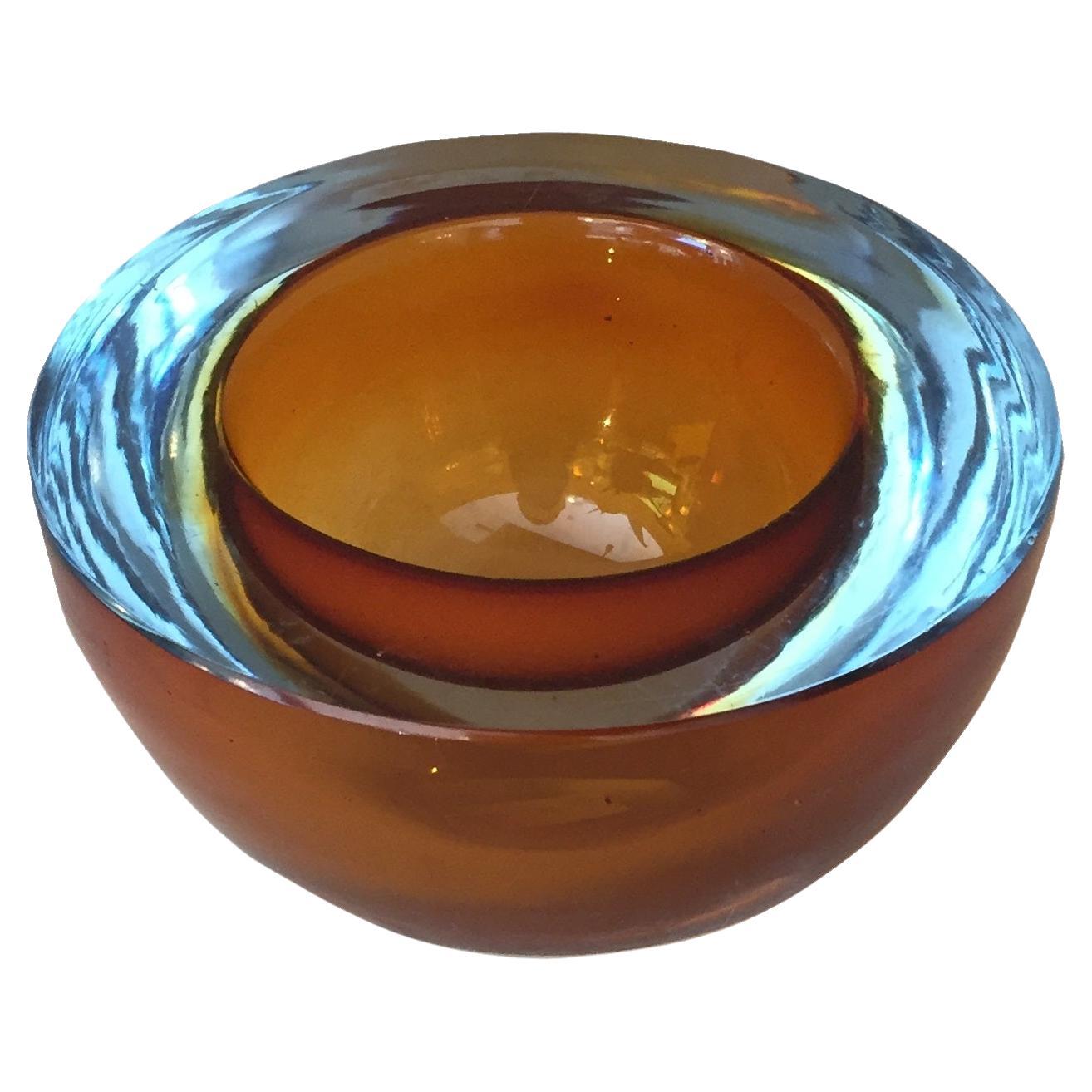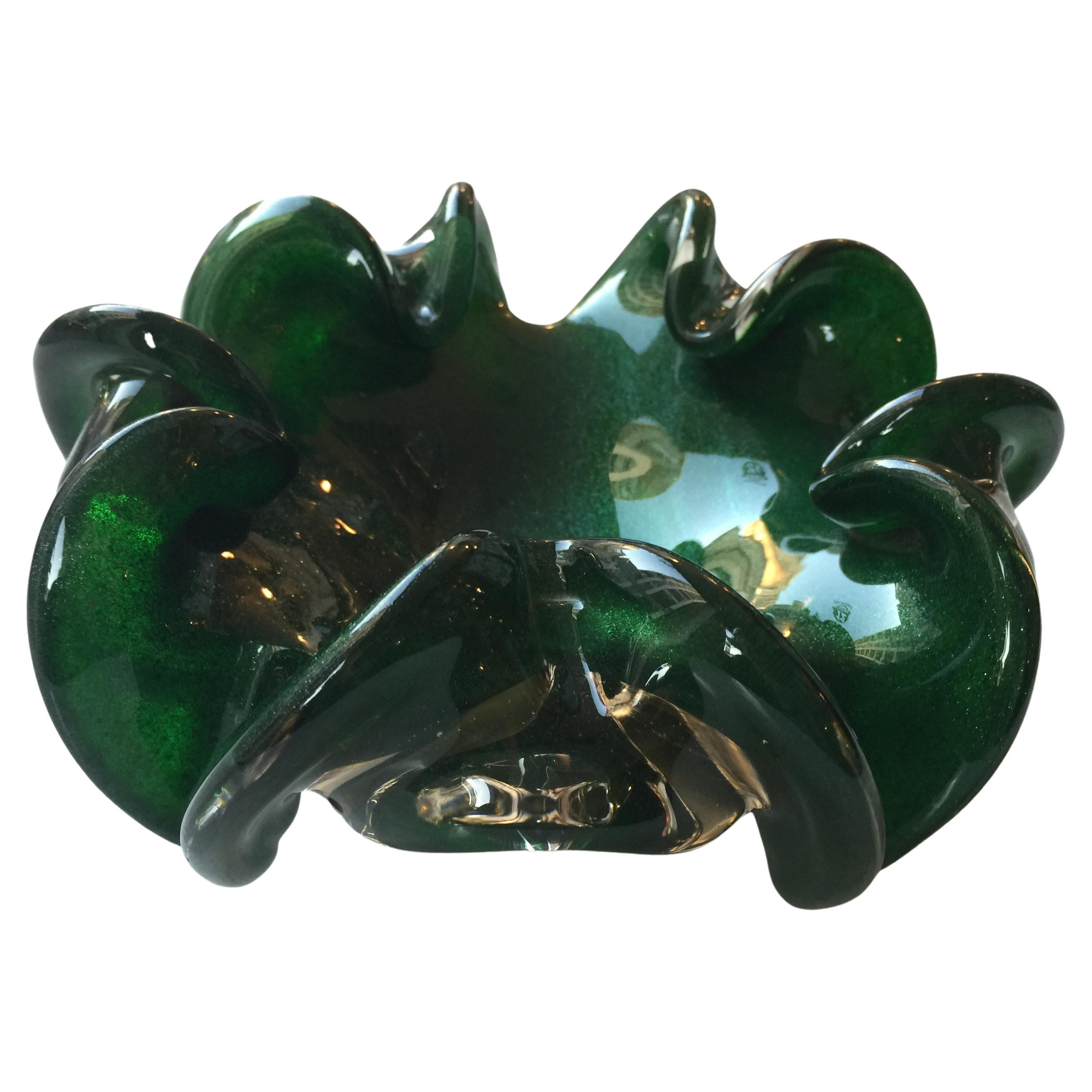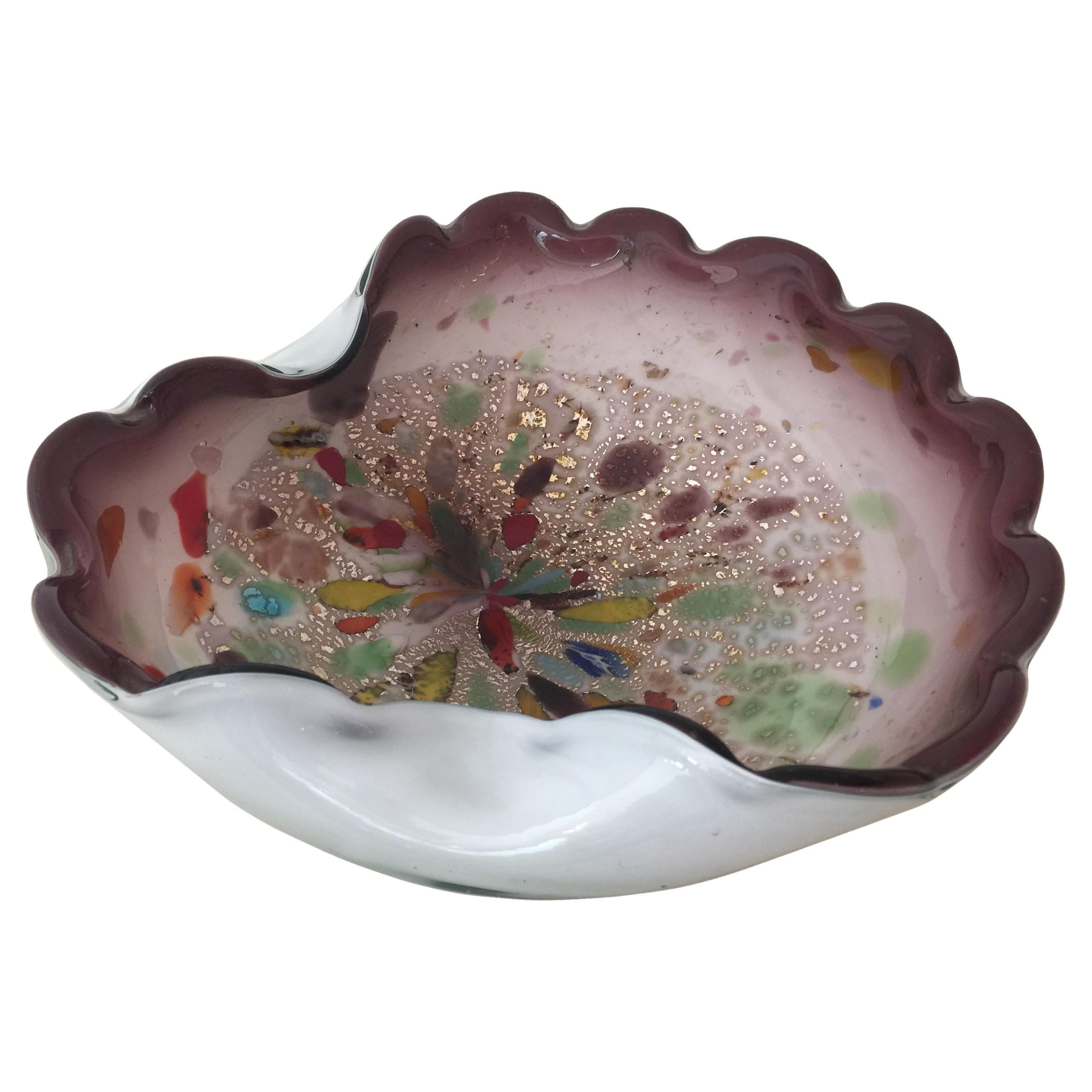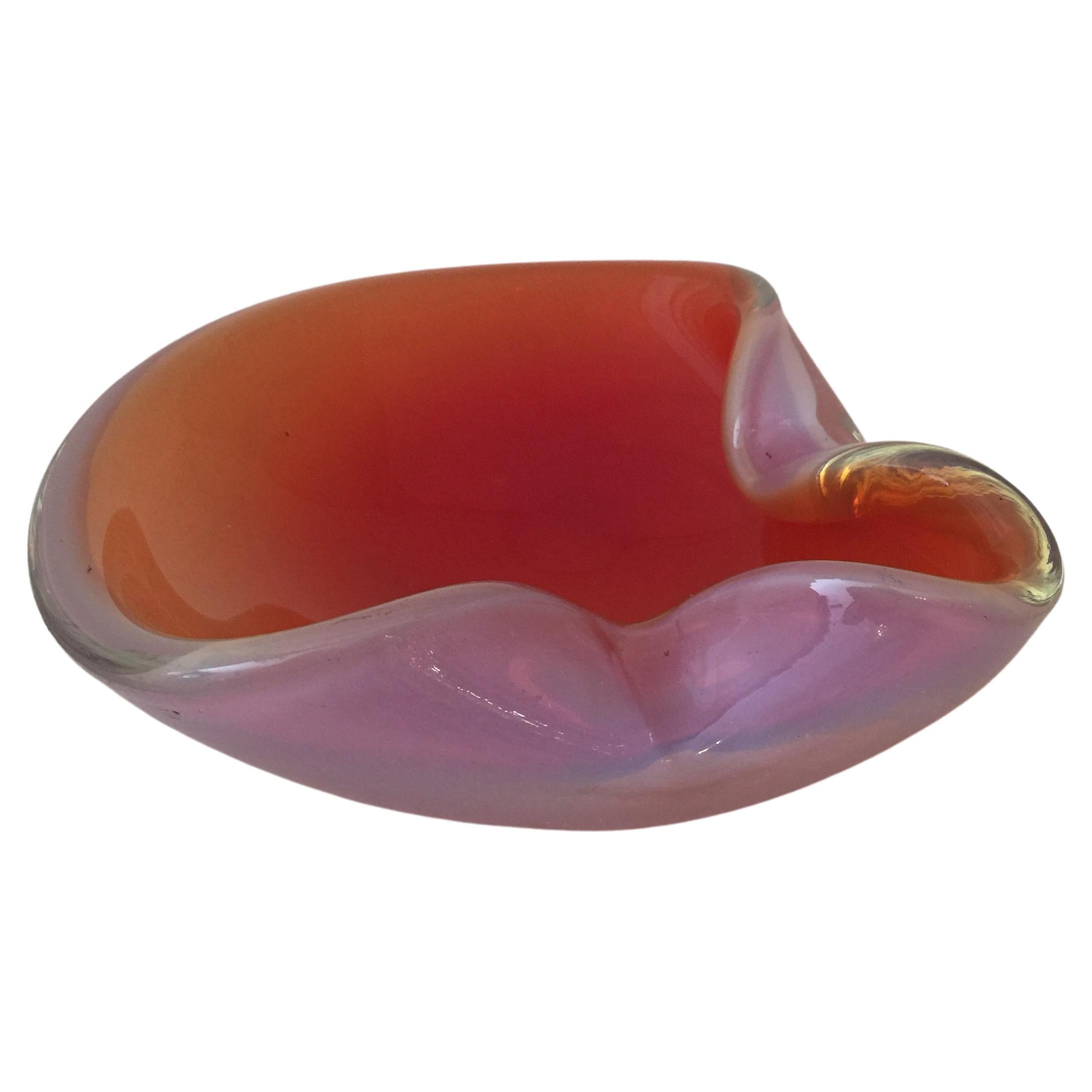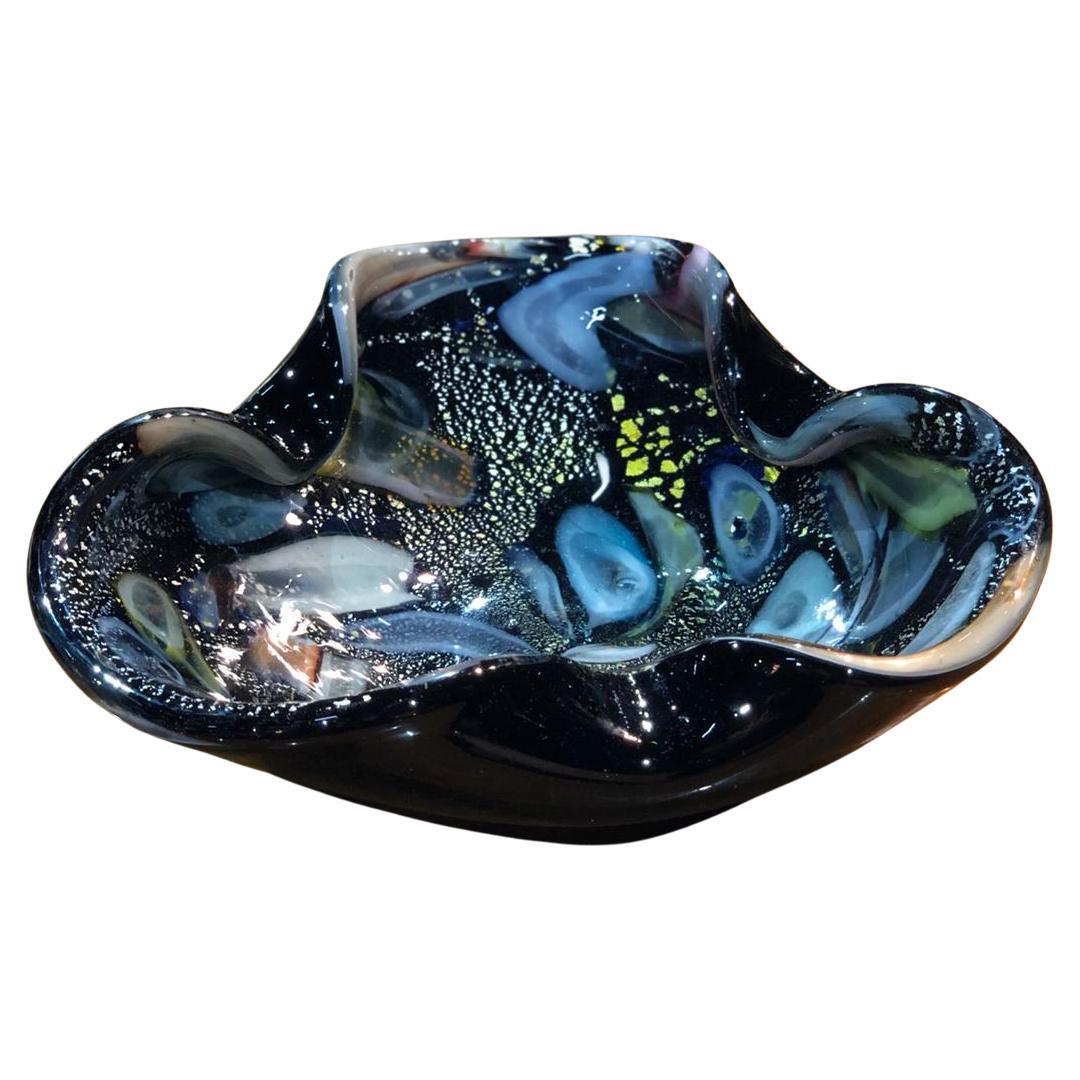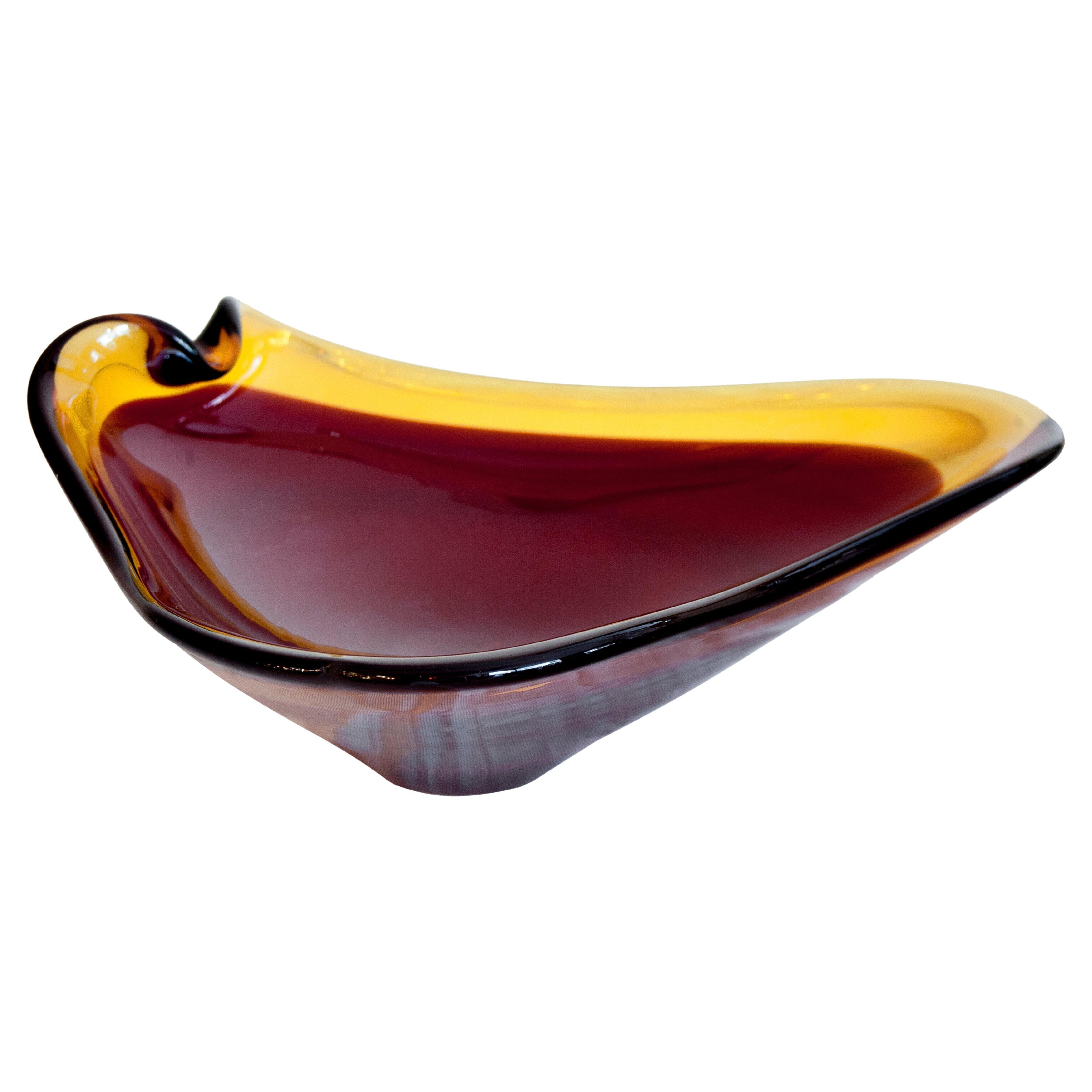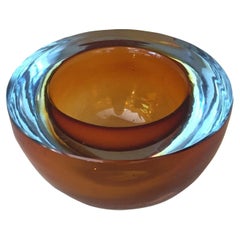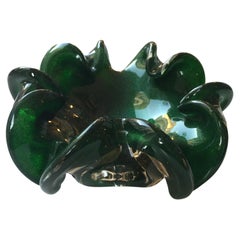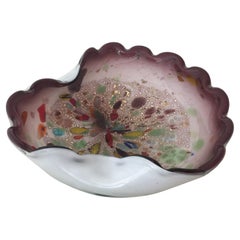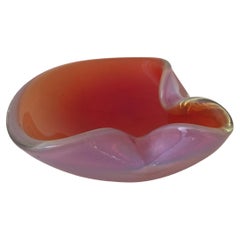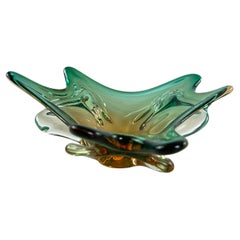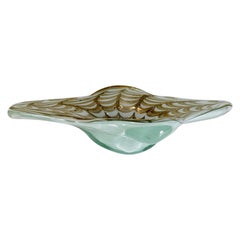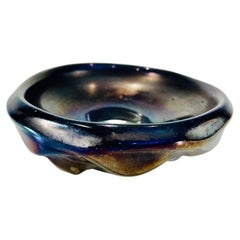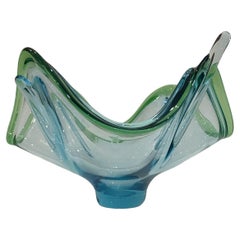Items Similar to Murano, Italian, Attributed to Barovier Toso, 1940
Video Loading
Want more images or videos?
Request additional images or videos from the seller
1 of 14
Murano, Italian, Attributed to Barovier Toso, 1940
$1,800
£1,353.12
€1,568.70
CA$2,513.08
A$2,814.78
CHF 1,464.62
MX$34,185.34
NOK 18,567.72
SEK 17,520.03
DKK 11,704.74
Shipping
Retrieving quote...The 1stDibs Promise:
Authenticity Guarantee,
Money-Back Guarantee,
24-Hour Cancellation
About the Item
Murano with gold
We have specialized in the sale of Art Deco and Art Nouveau and Vintage styles since 1982. If you have any questions we are at your disposal.
Pushing the button that reads 'View All From Seller'. And you can see more objects to the style for sale.
Attributed to Barovier Toso
We have specialized in the sale of Art Deco and Art Nouveau and Vintage styles since 1982.
The company is one of the oldest family businesses in the world, founded in 1295 as Barovier. "The name Barovier derives from the term berroviere (highwayman/policman , which indicates the armigero (person entitled to bear arms guarding the captain of the people. It is probable that some Barovier, originally from Treviso, settled in Murano around 1291, when a law of the Republic imposed the concentration on the island of all glass furnaces." Jacobello was the first member of the Barovier family to work glass at this time. It is thought that the company originated in Treviso[citation needed]. The Toso family had been established in Murano since around 1350. In the 1400s Angelo Barovier created glass objects which are currently preserved in various museums.[6] Angelo is recognized as significant for uniting the knowledge which had been developed and handed down by family Barovier. He was not only considered and artist but a scientist.
The company became Ferro Toso Vetrerie Artistiche Riunite S.A in 1936 when Vetreria Artistica Barovier merged with Ferro Toso, specializing in crystalline glass, mother-of-pearl glass, and gold-free cornelian red glass. In 1942, the company was renamed Barovier & Toso.
In 1919–1920, 30 year old designer Ercole Barovier began a 50-year career as the artistic director of Barovier & Toso. "After studying medicine and working as a radio operator during World War One he joined the family firm in 1920 when he and his brother Nicolo took over the management from their father Benvenuto. From 1927 Ercole was the main designer and from 1934, when Nicolo left the company, (he was) also the sole owner." While Barovier did not have formal training as a glassblower, his artistic designs produced objets d'art that have become the most critically acclaimed in the history of Ercole - Barovier.[9] In 1930 he produced his award-winning “Primavera” series. "The Primavera series ... is distinguished by a milky white 'craquelé' glass with the addition of black or blue pasta vitrea trim ("opaque colored glass whose consistency is made to appear like ceramic") and decoration. There was a very limited production of this series due to the fact that it was a result of a glass mixture obtained accidentally so it could never be replicated."[13] One example of this series, a Primavera Pigeon, was sold at auction for GBP 275,000 (approximately $360,000 USD, not inclusive of the buyer’s premium) on October 16, 2019.
Barovier continued to produce innovative designs of which the “Lenti” vase series is an example. “Lenti” was produced in 1940. This vase was a dual ‘layer’ vase. This type of vase is sometimes referred to as 'cased'. “Cased glass combines glass layers of contrasting color, or a colored layer blown with a clear one. The interior layer is, in effect, encased in the exterior … Looking into the interior of a cased object will reveal a color different than that of the exterior. One of the first known examples of cased glass, the Portland Vase, dates from the reign of Roman emperor Caesar Augustus.” The first outer layer of the Lenti vase consisted of a series of clear thick convex semi-globular forms in which small thin leaves of pure gold are suspended. The inner thin layer of the vase was made of a brightly colored glass. The clear outer portion of the vase reflects the color of the inner vase while creating an optical illusion (due to the magnification effect of the convex shaped glass) of large ‘moving’ gold leaves. This series was produced in colors that vary and include cerulean blue, aqua blue, emerald green, lime green and crimson red.
Barovier & Toso, under the direction, of Ercole Barovier, won numerous awards during the 1940s and 1950s for innovations in the murrine technique.[19] Murrine technique begins with the layering of colored liquid glass, heated to 1500-1700F or above, which is then stretched into long rods called canes. When cooled, these canes are then sliced in cross-sections, which reveals the layered pattern.[20] A 9+1/2-inch high vase created by the Murrine technique by Ercole Barovier and described as a “1930, clear murrines (vase) edged in red with aventurine” was offered at auction on May 20, 2014. "Prior to sale estimates from the auction house gave an anticipated value of $ 15,000 - 20,000 (USD). The final bid was $ 317,000 (USD) not inclusive of the buyer’s premium. Buyer’s premium at fine art auctions houses will generally add an additional 20-25% (of the final winning bid amount) to the final total price.
In the early 1990s, Barovier & Toso manufactured the chandeliers in the Hassan II Mosque in Casablanca.
Why are there so many antiques in Argentina?
In the 1880 – 1940 there was a grate wave of immigration encouraged by the periods of war that were taking place.
1st World War took place between 1914 and 1918
2nd World War took place between 1939 and 1945
The immigrants options were New York or Buenos Aires. Tickets were cheap and in Buenos Aires they were welcomed with open arms, as it was a country where everything was still to be done.
Argentina was the country of new opportunities, labour was needed and religious freedom was assured, in many cases the of the family travel first until they were settled and then the rest of the family members join them.
In the immigrant museum “Ellis Island Immigrant Building” in New York you can se the promotional posters of the boats that would take them to a new life.
Between the years 1895 and 1896, Argentina had the highest DGP (gross domestic product) per capita in the world according to the Maddison Historical Statistics index, this situation arose due to the large amount of food being exported to European countries, which were at war.
The Argentinean ships left the port of Buenos Aires with food, but they returned with furniture, clothes and construction elements, (it´s common to see this the old buildings of the historic neighbourhood of San Telmo, the beams with the inscription “Made in England)”, as well as many markets that were built in Buenos Aires, such us the San Telmo Market, whose structure was brought by ship and afterwards assembled in 900 Defensa Street.
With the great influence of European immigrants living in the country, the children of the upper classes travelled to study in France, resulting in the inauguration of “La Maison Argentinienne”, on 27th of June 1928, in the international city of Paris, which hosted many Argentinians that were studying in Frace.
It´s the fourth house to be built after France, Canada and Belgium, being the first Spanish-speaking one. Still in place today (17 Bd Jourdan, 75014, Paris, France). Many of the children of these wealthy families who attended international art exhibitions, museums and art courses abroad, took a keen interest in the European style. This is why Buenos Aires was at the time referred as “The Paris of South America”.
Between the years 1890 and 1920 more than a hundred Palaces were built on Alvear Avenue the most exclusive avenue in Buenos Aires. Today some of these palaces have been transformed into museums, hotels and embassies.
In the year 1936, the Kavanagh building was inaugurated, it was the tallest reinforced concrete building in South America.
During 1994 the American Society of Civil Engineers distinguished it as an “international engineering milestone”, and it´s now considered a World Heritage of Modern Architecture.
At the time was common to hire foreign architects such as Le Corbusier, who visited Buenos Aires/Argentina in 1929 and in 1948 he drew up the blueprints for a house built in La Plata City (which was declared a World Heritage Site).
In 1947, the Hungarian architect Marcelo Breuer designed “Parador Ariston” in the seaside city of Mar del Plata. After an Argentinean student at Harvard University convinced him to come to Argentina. He worked on an urban development project in the Casa Amarilla, area of La Boca.
The Ukrainian architect, Vladimiro Acosta, arrives in Argentina in 1928 and worked as an architect until que moved to Brazil.
Antonio Bonet, a Spanish architect who worked with Le Corbusier in Paris, arrives in Argentina in 1937, where he carried out several architectural works and in 1938 designs the well-known BFK chair.
Andres Kálnay, of Hungarian origin, made around 120 architectural masterpieces, among which the former Munich brewery stands out, he even made the furniture’s design.
The German architect, Walter Gropius, director of the Bauhaus, lived in Argentina, where he wrote articles for “Sur” magazine and founded in Buenos Aires, an architectural firm with Franz Möller, who was also an architect, where he built two houses.
At the same time several famous designers decided to immigrate to Argentina, among them we can find the well-known French designer, Jean-Michel Frank, who arrived in the country in 1940 and also worked for the Rockefeller family.
Special pieces were made, which were sold exclusively in the country, such as the well-known German company “WMF”, who sold their products by catalogue, which were chosen by the ladies of high society in the list of wedding gifts, as well as the pieces designed by Christofle.
The Swiss sculptor Alberto Giacometti, made special pieces for Argentinean mansions.
In 1904 the first Jansen branch outside Paris was established in Buenos Aires, as the Argentinean clientele demanded a large amount of furniture, from the end of the 19th century to the mid-20th century.
In 1970, the brand Rigolleau Argentina made pieces authorised by Lalique.
The brands Maple and Thompson also set up shop in the country.
The French plastic artist, Marcel Duchamp moved to Argentina in 1918-1919.
Glass signed Gallé, Charder, Leverre, Schneider, Muller and other French firms. They were bought in flower shops and were given to ladies with beautiful floral arrangements.
Some furniture manufacturers travelled to international fairs and bough the patterns to produce the furniture in Argentina, such as the furniture firm Englander and Bonta, who bought the patterns ins Italy.
It is worth mentioning that in Argentina we have the largest community of Italians outside of Italy, as it is estimated that 70 percent of the inhabitants have at least one Italian descendant, followed by Spanish immigrants.
The most Important furniture stores in Argentina:
Comte is founded in 1934 (under the direct management of Jean Michel Frank in 1940).
Nordiska (Swedish company established in 1934).
Churba in 1960, a company that brought foreign designers to present their furniture in the country:
Denmark: (Arne Jacobsen, Finn Juhl, Bender Madsen, Ejner Larsen, Poul Kjaerholm, Hans Wegner)
Sweden: (Hans Agne Jakobsson, Gustavsberg)
United States: (Herman Miller)
Finland: (Lisa Johansson, Folke Arstrom, Tapio Wirkkala, Alvar Aalto, Timo Sarpaneva)
Swedish Factory: (Orrefors)
Italy: (Littala, Vico Magistretti, Emma Gismondi, Gae Aulenti, Angelo Mangiarotti, Elio Martinelli, Gianna Celada, Angelo Mangiarotti, Mario Bellini, Carlo Scarpa)
Finland: (Olivia Toikka)
Plata Lappas (Lappas Silver): a goldsmith shop founded in 1887 in Argentina by Alcibiades Lappas of Greek origin.
In 2019, in Argentina took place “the Art Deco world congress”, in which we participated as hosts invited by Geo Darder, founder of the Copperbridge – Foundation, in which prominent people from all over the world attended to learn about Art Deco in Argentina.
Argentina currently has more than 100 Art Deco buildings and another 90 Art Nouveau buildings throughout the city of Buenos Aires.
Argentina is a country that has not been involved in many wars, which is why it has been a refuge for works of art and antiques from different periods of time, unlike European countries. That is way many collectors, museums and antique dealers from all over the world visit it, you should not miss the opportunity to visit this great country.
Laura Guevara Kjuder, architect.
- Attributed to:Vetreria Artistica Barovier & C. (Designer)
- Dimensions:Height: 2.76 in (7 cm)Diameter: 6.7 in (17 cm)
- Style:Art Deco (Of the Period)
- Materials and Techniques:
- Place of Origin:
- Period:
- Date of Manufacture:1940
- Condition:Wear consistent with age and use.
- Seller Location:Ciudad Autónoma Buenos Aires, AR
- Reference Number:Seller: MU-281stDibs: LU6785231888132
About the Seller
5.0
Vetted Professional Seller
Every seller passes strict standards for authenticity and reliability
Established in 1982
1stDibs seller since 2022
36 sales on 1stDibs
Typical response time: <1 hour
- ShippingRetrieving quote...Shipping from: Ciudad Autónoma Buenos Aires, Argentina
- Return Policy
Authenticity Guarantee
In the unlikely event there’s an issue with an item’s authenticity, contact us within 1 year for a full refund. DetailsMoney-Back Guarantee
If your item is not as described, is damaged in transit, or does not arrive, contact us within 7 days for a full refund. Details24-Hour Cancellation
You have a 24-hour grace period in which to reconsider your purchase, with no questions asked.Vetted Professional Sellers
Our world-class sellers must adhere to strict standards for service and quality, maintaining the integrity of our listings.Price-Match Guarantee
If you find that a seller listed the same item for a lower price elsewhere, we’ll match it.Trusted Global Delivery
Our best-in-class carrier network provides specialized shipping options worldwide, including custom delivery.More From This Seller
View AllMurano, 1940, Attributed to Flavio Poli, Italian
By Flavio Poli
Located in Ciudad Autónoma Buenos Aires, C
Murano
We have specialized in the sale of Art Deco and Art Nouveau and Vintage styles since 1982. If you have any questions we are at your disposal.
Pushing the button that reads '...
Category
Vintage 1940s Italian Art Deco Centerpieces
Materials
Murano Glass
Murano, 1930, Italian
Located in Ciudad Autónoma Buenos Aires, C
Murano
We have specialized in the sale of Art Deco and Art Nouveau and Vintage styles since 1982. If you have any questions we are at your disposal.
Pushing the button that reads 'Vi...
Category
Vintage 1930s Italian Art Deco Centerpieces
Materials
Murano Glass
$2,750
Murano, 1930, Italian, Attributed to Fratelli Toso, Technical Avventurina
By Fratelli Toso
Located in Ciudad Autónoma Buenos Aires, C
Murano
Technical Avventurina :
We have specialized in the sale of Art Deco and Art Nouveau and Vintage styles since 1982. If you have any questions we are at your disposal.
Fratelli Toso, Venice
One of the oldest glass factories established in Murano, Fratelli Toso was founded in 1854 by six brothers who loved the art of glassmaking. With over 150 years of experience in the field, the Toso family improved their techniques and nowadays are one of the top award-winning manufacturers of Murano glass.
Technical Avventurina :
Avventurina is a Murano glass-making technique developed on Murano island in the 17th century. I was first mentioned in a document dating from 1614 as "a kind of stone with gilt stars inside", at which point it already mesmerized people with the unusual and attractive look. The technique owes its name to the fact that its discovery happened by chance thanks to a lucky coincidence, when a glass artisan is said to have accidentally dropped some metal shavings into the glass mixture. Italians say it happened "all'avventura", which in Italian means "by chance".
The first documented recipe for the technique dates from 1644, when Murano master glassmaker Giovanni Darduin described how Avventurina glass should be created. The recipe involves adding various metal oxides such as copper and iron to the hot glass mixture, which will cause tiny particles of the metals to crystallize as the glass mixture cools off.
Complicating the process, for such crystallization to occur the furnace had to get fully extinguished, and the metal particles would slowly separate from the glass base over a few days during the natural cooling of the glass. This was a very difficult process from a logistical perspective, since every time a glass furnace got extinguished it caused work to be paused, and re-igniting it was quite a big process, as it took time to fully heat it to the desired temperature.
As industrial revolution set foot on Murano in the nineteenth century, the process got a remake. Large volumes of fine Avventurina paste were made and then skillfully stretched into glass canes, which were then re-melted for jewelry-making under a small flame, or for glass blowing. This Avventurina paste received worldwide acclaim and re-ignited the fame of Murano Glass workshops due to its use in Salviati mosaics...
Category
Vintage 1930s Italian Art Deco Centerpieces
Materials
Murano Glass
Murano, 1930, Italian, Attributed to Paolo Venini-Seguso
By Paolo Venini
Located in Ciudad Autónoma Buenos Aires, C
Murano
We have specialized in the sale of Art Deco and Art Nouveau and Vintage styles since 1982. If you have any questions we are at your disposal.
Pushing the button that reads 'View All From Seller'. And you can see more objects to the style for sale.
Attributed to Venini
Early life and education
Venini was born in the town of Cusano near Milan, Italy. After serving in the Royal Italian Army in World War I, he trained as a lawyer and began his practice in Milan. He soon developed an acquaintance with Giacomo Cappellin, a native of Venice who owned a Milan antiques...
Category
Vintage 1930s Italian Art Deco Ashtrays
Materials
Murano Glass
Murano 1930, Italian, Technical Avventurina
Located in Ciudad Autónoma Buenos Aires, C
Murano.
With silver applications.
We have specialized in the sale of Art Deco and Art Nouveau and Vintage styles since 1982. If you have any questions we are at your disposal.
Pushing the button that reads 'View All From Seller'. And you can see more objects to the style for sale.
Technical Avventurina :
Avventurina is a Murano glass-making technique developed on Murano island in the 17th century. I was first mentioned in a document dating from 1614 as "a kind of stone with gilt stars inside", at which point it already mesmerized people with the unusual and attractive look. The technique owes its name to the fact that its discovery happened by chance thanks to a lucky coincidence, when a glass artisan is said to have accidentally dropped some metal shavings into the glass mixture. Italians say it happened "all'avventura", which in Italian means "by chance".
The first documented recipe for the technique dates from 1644, when Murano master glassmaker Giovanni Darduin described how Avventurina glass should be created. The recipe involves adding various metal oxides such as copper and iron to the hot glass mixture, which will cause tiny particles of the metals to crystallize as the glass mixture cools off.
Complicating the process, for such crystallization to occur the furnace had to get fully extinguished, and the metal particles would slowly separate from the glass base over a few days during the natural cooling of the glass. This was a very difficult process from a logistical perspective, since every time a glass furnace got extinguished it caused work to be paused, and re-igniting it was quite a big process, as it took time to fully heat it to the desired temperature.
As industrial revolution set foot on Murano in the nineteenth century, the process got a remake. Large volumes of fine Avventurina paste were made and then skillfully stretched into glass canes, which were then re-melted for jewelry-making under a small flame, or for glass blowing. This Avventurina paste received worldwide acclaim and re-ignited the fame of Murano Glass workshops due to its use in Salviati mosaics...
Category
Vintage 1930s Italian Art Deco Centerpieces
Materials
Silver, Gold
Murano, 1940 . Attributed to Seguso - Barovier, Italian
By Barovier Seguso & Ferro
Located in Ciudad Autónoma Buenos Aires, C
Murano
Attributed to Seguso - Barovier
We have specialized in the sale of Art Deco and Art Nouveau and Vintage styles since 1982. If you have any questions we are at your disposal.
Pushing the button that reads 'View All From Seller'. And you can see more objects to the style for sale.
The history of "Seguso Vetri D' Arte" is directly linked to the "Vetreria Artistica Barovier" company. When the Barovier workshop was forced to reduce production in 1929, due to a financial crisis in America, the
original group of ten partners had to separate and Antonio Seguso in 1931, assisted by his sons Ernesto and Archimede opened a small workshop of his own. They were joined by Luigi Olimpio Ferro and Napoleone Barovier the following year. Together the craftsmen establish the "Artistica Soffieria e Vetreria Barovier Seguso & Ferro" company as equal partners.
In 1934 Flavio Poli joins the firm as artistic director and within only a brief period of time a distinct style of designs emerged. The close collaboration between Flavio Poli, Archimede Seguso and Alfredo Barbini played an important part in the success of the company. New glass techniques are developed which include never before seen color applications.
The companies innovative designs constantly received awards and during the 1935 World Fair in Brussels and the 1936 Milan Triennale they did attract the interest of a new group of clientele. One of them is the French wholesale company "Veronese" from Paris which would play a defining role in the history of the company.
The demand for an increase in production requires additional investments and the partners felt that there is a need to multiply their investment tenfold.
Luigi Olimpio Ferro subsequently decided to withdraw from the company and his shares are acquired by Flavio Poli, which makes him a full partner. As a result, the company name is changed to Seguso Vetri D’ Arte and it is officially recognized in 1937. A period of great success and prosperity ensues, lasting until the outbreak of World War II.
The post war period is a time of great change in Europe and the rebuilding of the economical structure in Italy requires major investments which result in the introduction of new import duties and taxes.
To safeguard the copyright of the Seguso Vetri D'Arte designs an application for a second entry into the commercial registers of Venice is made by the partners in 1945.
Strict export regulations curb international business relations for many years after the war and the company decides to focus on the domestic market instead. In 1946 a large retail location is opened at the Piazza Diaz in Milan where in addition to the art glass...
Category
Vintage 1940s Italian Art Deco Centerpieces
Materials
Murano Glass
You May Also Like
Mid-Century Murano Glass Bowl Italian Design 1960s
Located in Palermo, IT
Mid-Century Murano glass bowl Italian design 1960s
Intact and in good condition, small signs of aging.
Category
Vintage 1960s Italian Ashtrays
Materials
Murano Glass
$372 Sale Price
20% Off
Barovier&Toso Murano glass with "venturina" circa 1950
By Barovier&Toso
Located in Rio De Janeiro, RJ
Incredible Barovier &Toso center piece with "venturina"in Murano glass circa 1950
Category
Vintage 1950s Italian International Style Centerpieces
Materials
Murano Glass
Center Piece in Murano glass attributed to Barovier&Toso 1950
By Barovier&Toso
Located in Rio De Janeiro, RJ
Incredible center piece in Murano glass black iridized attributed to Barovier&Toso circa 1950
Category
Vintage 1950s Italian International Style Centerpieces
Materials
Murano Glass
Murano Glass Centerpiece Italian 1940
Located in Ciudad Autónoma Buenos Aires, AR
Murano Glass Centerpiece Italian 1940
Category
Mid-20th Century Italian Art Deco Decorative Bowls
Materials
Art Glass
$1,160 Sale Price
20% Off
Mid-Century Murano Glass Centerpiece Attributed to Max Ingrand for Fontana Arte
By Fontana Arte, Max Ingrand
Located in Palermo, IT
Mid-Century Murano glass centerpiece attributed to Max Ingrand for Fontana Arte 1960s
It was purchased in Venice by the grandfather of a friend of mine.
Intact and in good condition....
Category
Vintage 1960s Italian Centerpieces
Materials
Murano Glass
$373 Sale Price
67% Off
Murano glass centerpiece attr. to Vittorio Zecchin
By Vittorio Zecchin
Located in Milano, IT
Large Murano Glass Centerpiece Dish Attributed to Vittorio Zecchin, 1940s-50s
This exquisite Murano glass centerpiece dish, attributed to the renowned Vittorio Zecchin, embodies the ...
Category
Vintage 1930s Italian Art Deco Serving Pieces
Materials
Murano Glass
More Ways To Browse
Roman Gold Glass
1930s Italian Interiors
1940 Emerald
19th Century Murano Art Glass
Antique Italian Cross
Murano Blue Centerpiece
Murano Bear
Murano Glass Bear
Radio 1940
Murano Gold Aventurine
Barovier And Toso Green
Crimson Glass
Vintage Centerpieces With Pearls
Red Vintage Radio
Swiss Guard
Murano Glass Centerpiece Red
Pigeon House
Childrens Cane Chair
